Nestled in the serene Parvati valley lies the picturesque village of Malana. Known for its unique culture and stunning natural beauty, Malana is a must-visit destination for any traveler. Located atat an altitude of about 9,938 feet (3,029 meters) above sea level, near the town of Jari, Malana has been a veritable ‘Forbidden Kingdom’ for eons.
Malana is a small village in the Himalayas, known for its ancient culture and cannabis production. It is often called the “village of taboos” because of its strict rules and customs that outsiders are not allowed to interfere with. In this blog post, I will share my experience of visiting Malana.
I had always been curious about Malana ever since I heard about its unique history and lifestyle. According to legend, Malana was founded by the descendants of Alexander the Great, who settled there after his invasion of India. The villagers claim to have a pure Aryan bloodline and consider themselves superior to other people. They have their own language, laws, and religion, which are different from the rest of the country. They worship a deity called Jamlu Devta, who is believed to be the supreme authority in all matters. They do not allow anyone to touch them or their belongings, as they consider it to be a violation of their purity. What intrigued me was the fact this ancient village is still almost isolated from the rest of the world. I was excited and immediately said yes, when my college batchmate Vikram told me about his plan to visit Malana in Parvati valley.
We left for Kasol in Himachal Pradesh from Amritsar (Punjab) by car. Vikram stays in Amritsar. Parvati Valley is well known among travellers for its psychedelic parties and free-flowing hashish that originates from the ancient village of Malana in North India’s Himachal Pradesh region. It was almost evening when we reached Kasol. Kasol is a lovely small town, also known as “Mini Israel” because of its hippie culture and large number of Israelis staying there.
REACHING MALANA
We had our breakfast in Kasol and headed to Jari, around 8 km from Kasol, from where we needed a permit to drive further towards Malana to reach the base of the hill. There is a point (foothill) from where there is climb by stairs to Malana. It’s almost 15 km from Kasol. But around 5 km of the road is a driver’s nightmare. From there, we had to hike for about two hours on a narrow and rocky trail, crossing streams and bridges along the way. The scenery was breathtaking, with lush green mountains and valleys surrounding me.


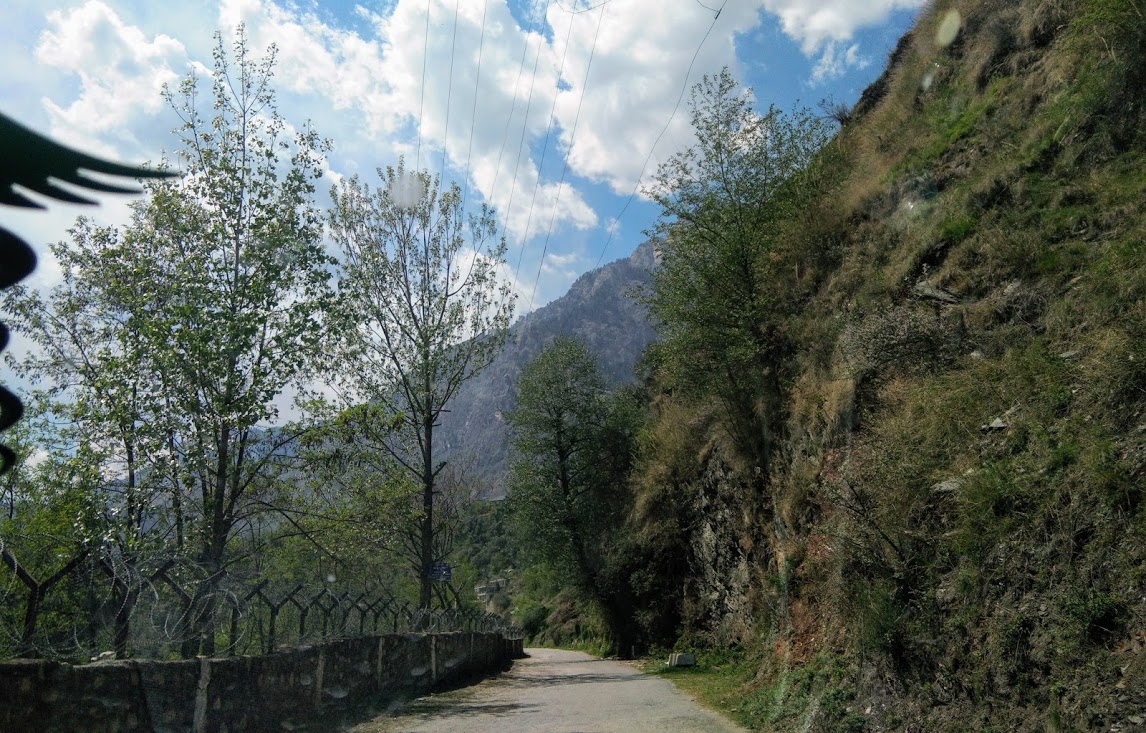
The road is extremely bad with hairpin bends. From that point, the village is almost 2 km away. But in that mountain, it’s quite a hike. Normally local residents take about 30 to 45 minutes to reach, which was covered by me and my friend in almost 2 hours.
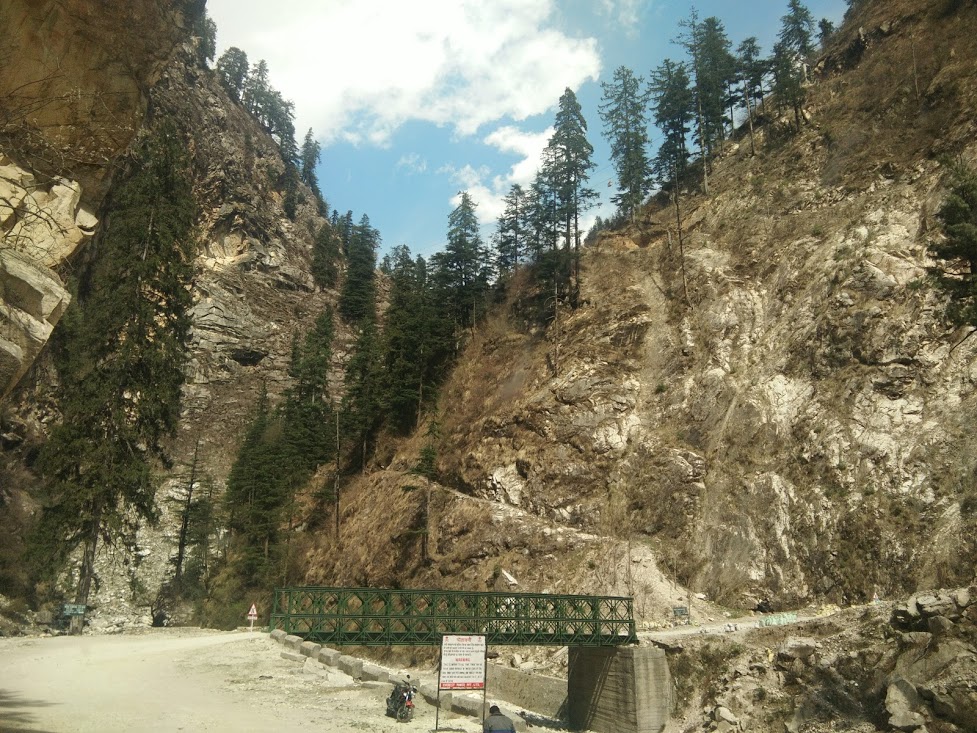
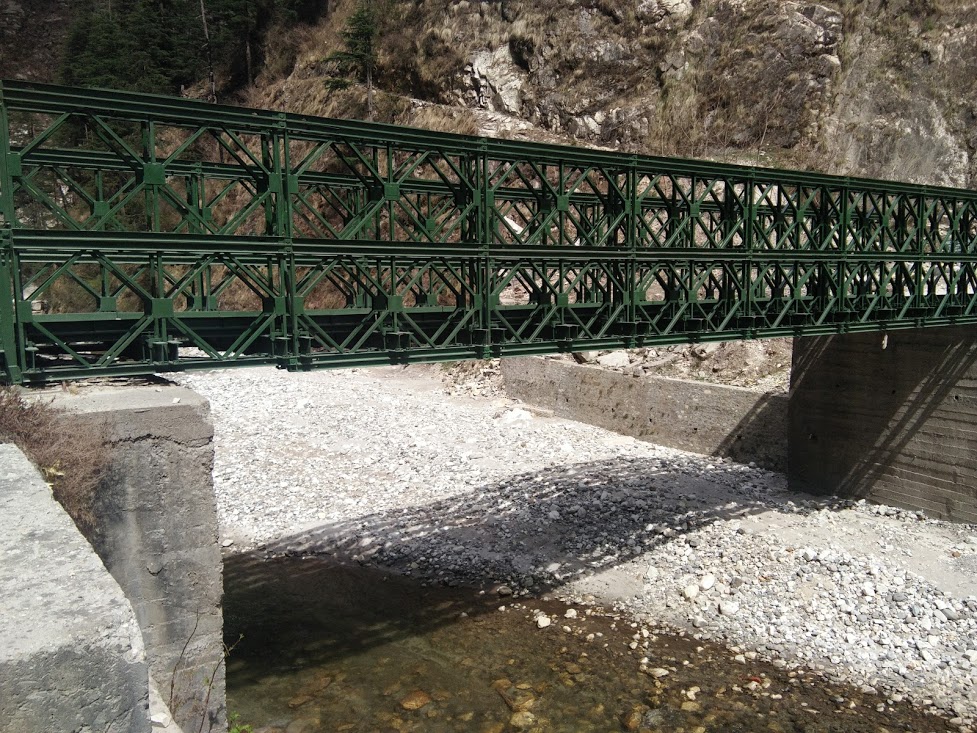

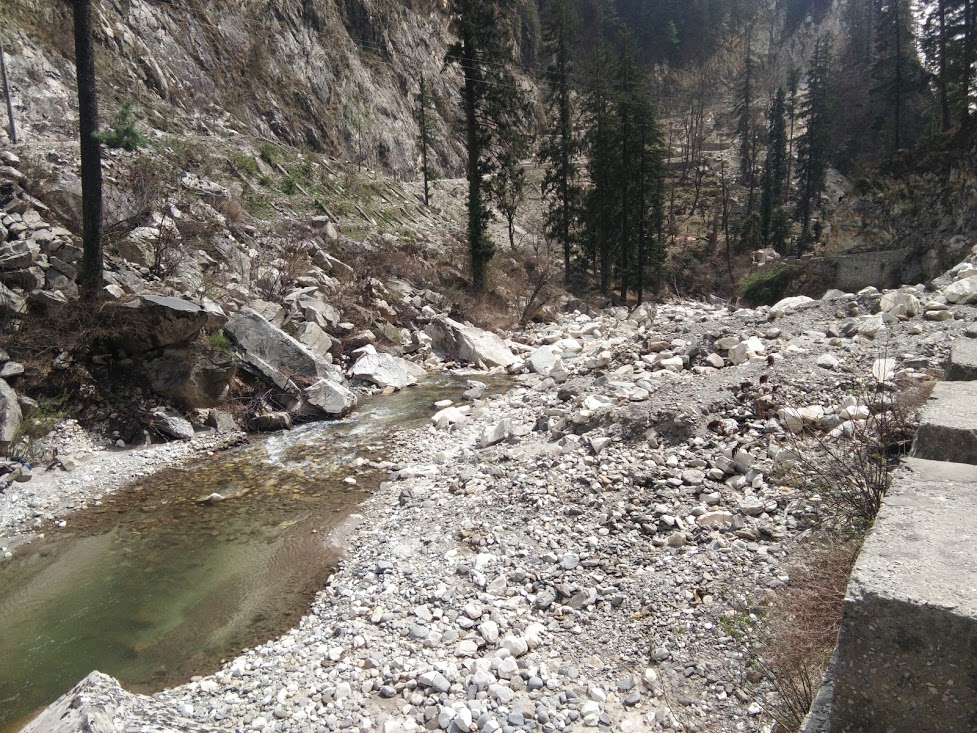
By far, Malana is the most intriguing village of Parvati valley and luring curious souls from all over the world. Road to Malana was quite different from the rest of Parvati valley.
We were inspired on the way when we saw old ladies (locals) carrying loads of firewood and climbing the stairs. The hike is not easy and we made it. For people like us used to urban lifestyle, the hike is not an easy one, but yes, it’s definitely worth.
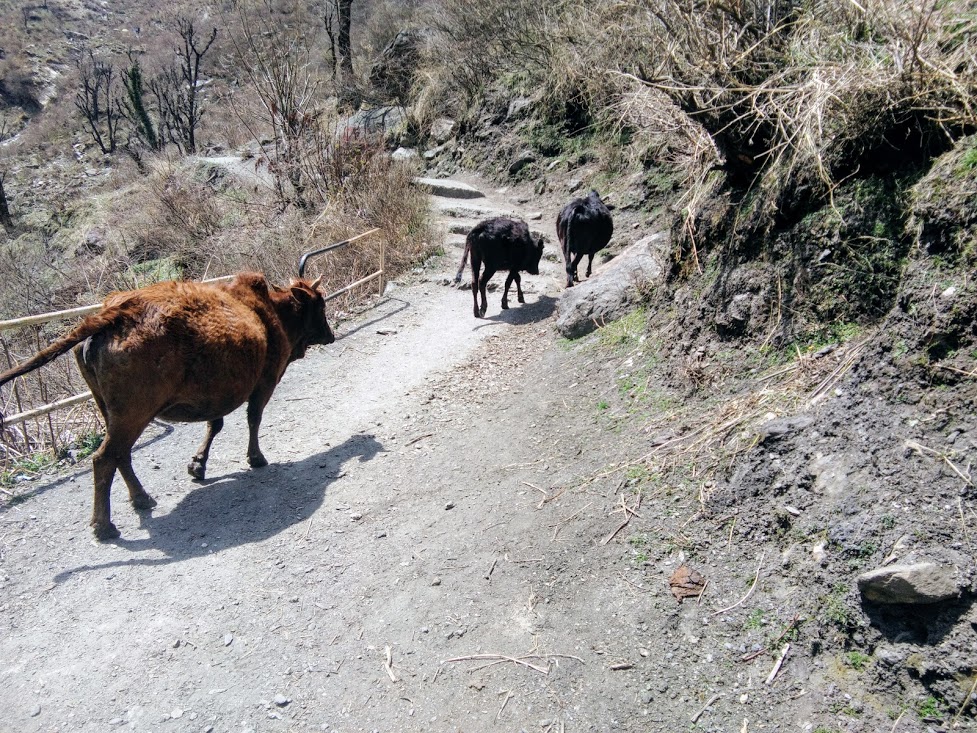
The trail to Malana is more or less shadowed with towering deodar and very well outlined. Malana was a delightful, stressful walk with fresh breeze gushing around our face, rejuvenating us, an endless track of deodar forest in the backdrop of snow-peaked mountains.
As we reached Malana, we were mesmerized by the picturesque beauty of the village. The village is situated in the Parvati Valley and is known for its unique culture and traditions. I saw a sign that said, “Welcome to Malana: The oldest democracy in the world”. I was amazed by this claim, as I wondered how such a remote and isolated place could have a democratic system. I later learned that the villagers elect their own representatives, who form a council that governs the village affairs. They also have a system of justice, where disputes are settled by the oracle of Jamlu Devta (Jamadagni Rishi), who communicates through a chosen villager.
LEGENDS
According to the Puranas, Jamadagni Rishi (sage) is the father of Parashuram, one of the ten incarnations of Lord Vishnu (Dashavatara). After his intense prayers, Lord Shiva appeared before him. Jamadagni Rishi asked for a secluded place, full of nature’s bounty. Lord Shiva told him to go to Malana. It is a magical green rimmed village that overlooks the Deotibba and Chandrakhani peaks. The tall deodar trees add to the serenity of the place. Wind always whistles here. The bright moonlight shining on the white snow peaks makes this place pearly white heaven. This beauty cannot be captured in a camera. One needs to be here to perceive this beauty. I am blessed to witness such beauty of nature, the divine glory. I can now understand why Lord Shiva directed sage Jamadagni to this awesome place. This place is mesmerising!
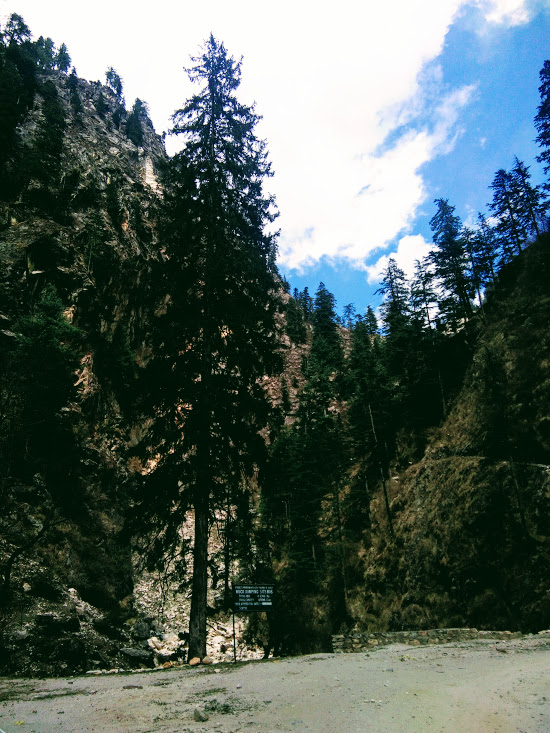
Malana was already in the control of a Rakshasa when the sage reached there the Rakshasa Banasura resisted him. The conflict between Jamdagni Rishi and Banasura ended with a peace treaty and according to which, administration and justice were to be handled separately. While the administration was with Banasura, justice was kept under the preview of Jamdagni Rishi. In case of a dispute in the administration, it was to be sorted out by the judiciary. The Kanashi language was made mandatory for those living in Malana, as also the customs and traditions prevalent there.
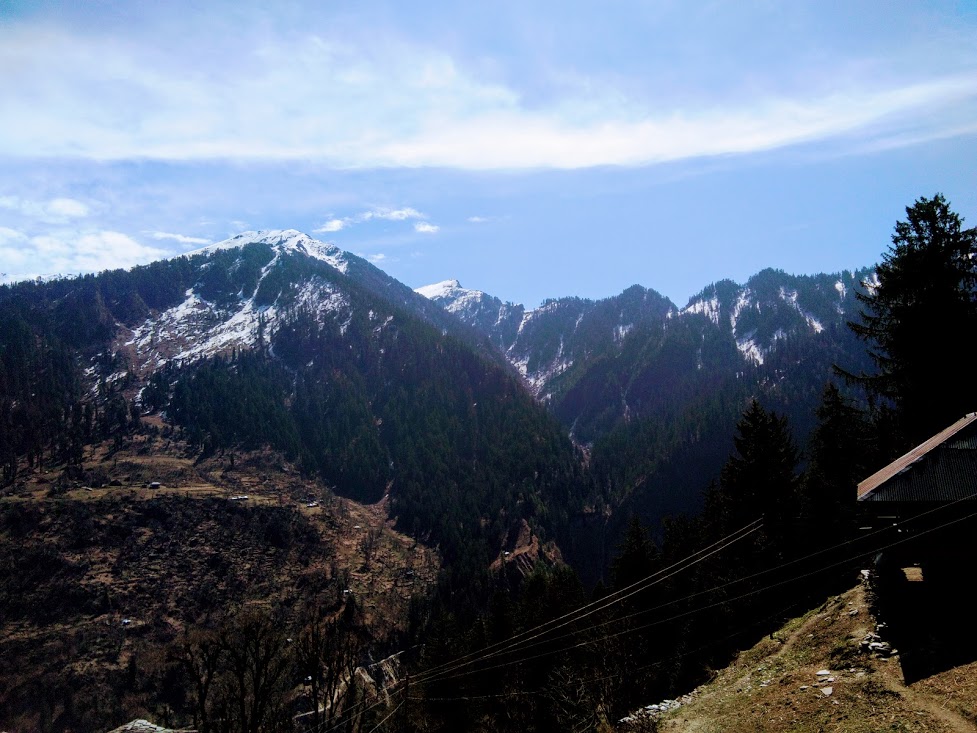
I wanted to learn more about the culture and beliefs of Malana, so I tried to talk to some of the locals. However, I soon realized that they were not very friendly or open to outsiders. They avoided eye contact and spoke in their own language, which sounded like a mix of Sanskrit and Tibetan. They did not seem interested in sharing their stories or opinions with me. They only answered my questions briefly and politely, but without any enthusiasm or emotion.
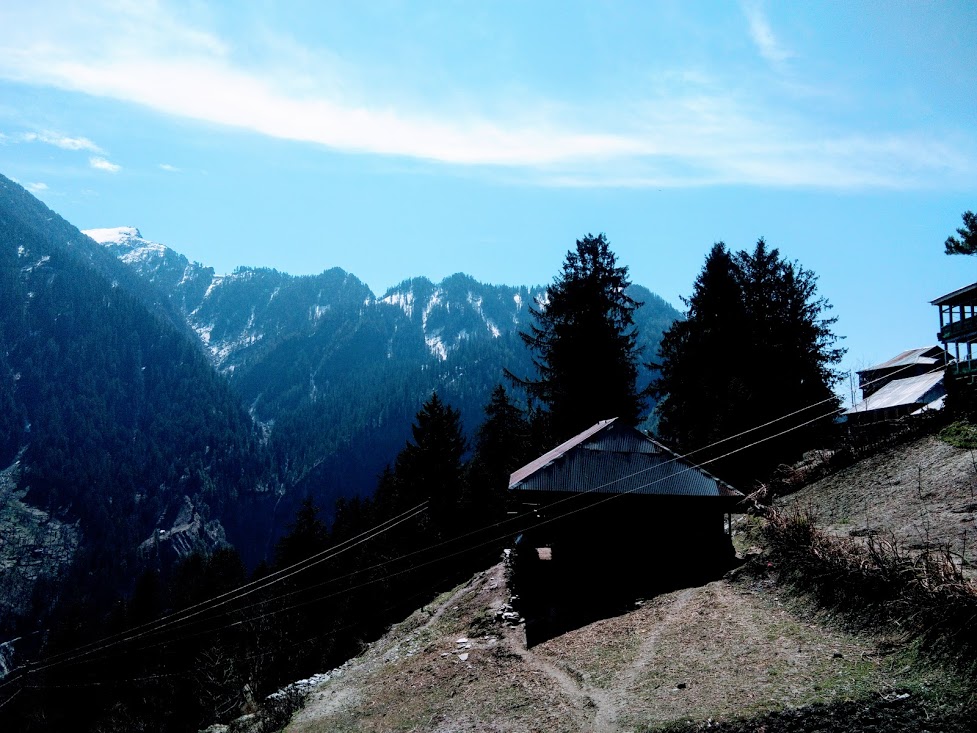
Kanashi, the language of Malana, does not resemble any of the dialects spoken in its neighbourhood but seems to be a mixture of Sanskrit and several Tibetan dialects. This sort of amalgamation makes it difficult for an alien to understand it. Language is also considered to be one of the secrets of the village and outsiders are not allowed to use it for communication. The Malanis (the inhabitants of Malana) still speak in that language. Thank God, many of them know Hindi also, so we could communicate with them.
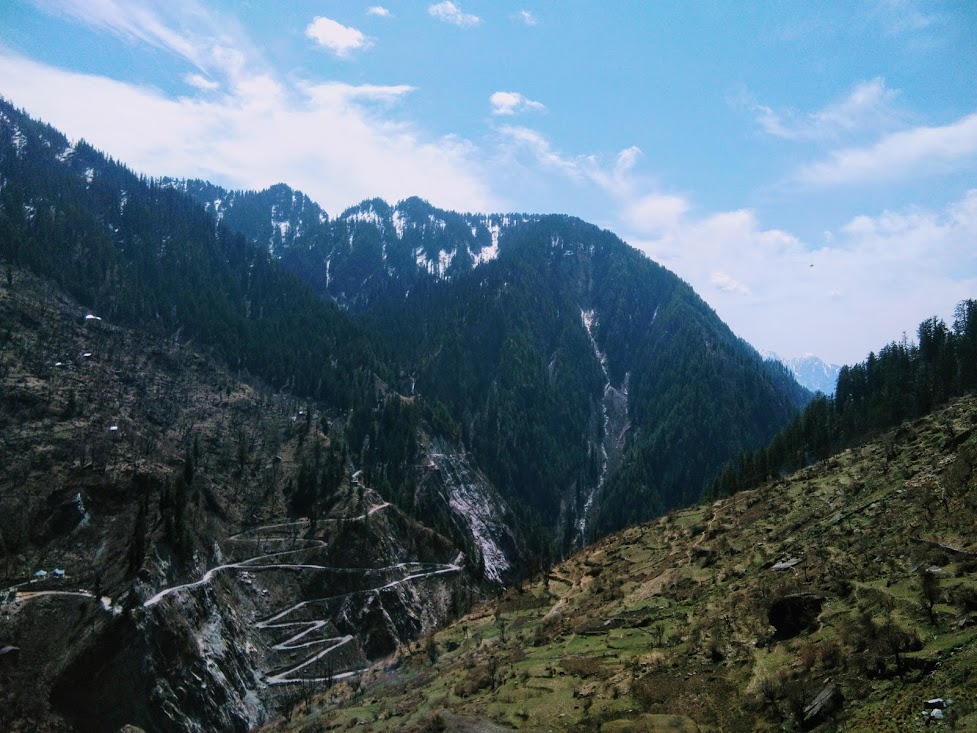
During the festivals, the first sacrifice was to be made to Banasura. With the passage of time, Jamdagni Rishi gained superiority over Banasura, but the village retained its traditions, which are still followed there. The village of Malana has its own religious beliefs. Apart from their undying faith in Lord Shiva, they believe in their Devta, Jamdagni Rishi. They call him Jamlu Devta.
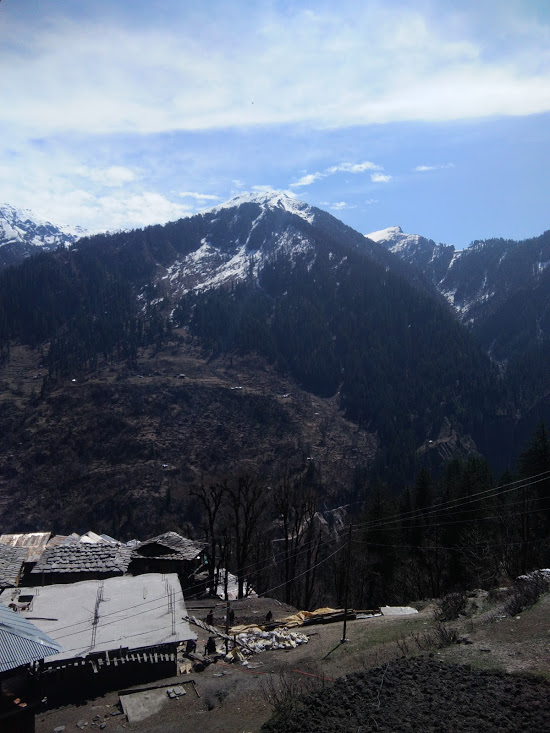
I entered the village with a sense of awe and respect. I was careful not to touch anything or anyone, as I knew it was forbidden. I saw wooden houses with slate roofs, arranged in clusters along the hillside. The villagers were mostly engaged in farming and animal husbandry, growing crops like maize, potatoes, and beans. They also cultivated cannabis plants, which they used for making hashish or charas. Charas is considered to be a sacred substance in Malana, and is offered to Jamlu Devta as a tribute. It is also a major source of income for the villagers, who sell it to tourists and smugglers. .
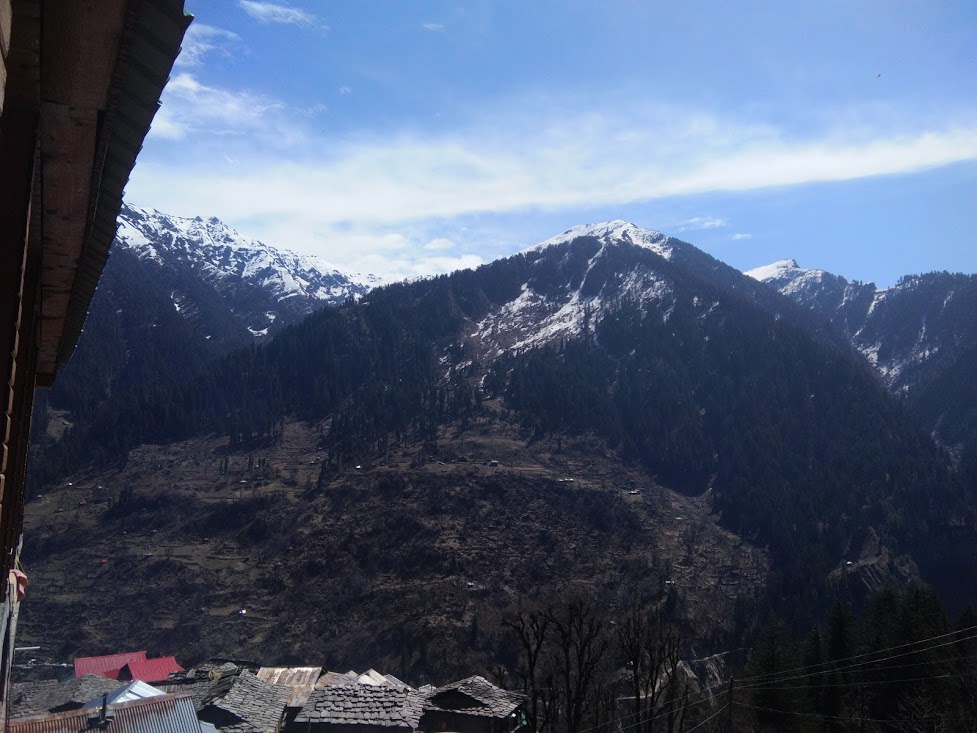
The village itself has a unique architecture, with stone-built houses and narrow alleys. It is surrounded by breathtaking mountain views and offers opportunities for trekking and hiking. Malana is also a popular destination for backpackers and tourists looking to experience its distinct culture and natural beauty.
HELLENIC CONNECTION
Legend has it that some of Alexander the Great’s army took shelter in this isolated village in 326 BCE after they were wounded in a battle against Porus, a ruler in India’s Punjab region. These soldiers are often said to be the ancestors of the Malani people. Artefacts from that period have been found in the village, such as a sword that reportedly rests inside the temple. However, genetic ties to the soldiers have not been established. The light-eyed residents of Malana claim they are descendants of the Greeks, and steadfastly believe their ancestors were Alexander’s soldiers who struck roots here after invading India in 326 BCE.
DEMOCRACY
Malana’s unique democratic system is said to be among the oldest in the world, and, similar to the Ancient Greek system of democracy, it consists of a lower house and upper house. However, it has a uniquely spiritual twist to it: ultimate rulings rest on the upper court, which includes three important figures, of which one is the representative of the local deity, Jamlu Devta.
The village has a democratic set up and the village council is called Hakima and consists of Gur, Pujari and Kardar representing higher court and Jestha the lower court. Pujari and Kardar are hereditary posts and are representatives of the Jamlu devta. Kardar is second in hierarchy. There are four elected members from the village called Jestha. Each Jestha can select one more member called Pogudar and the total elected members come to eight. Out of these eight, one person is elected as Pradhan (Chief) and the other is upapradhan (Deputy Chief).
On the basis of this participatory court procedure, some scholars trace the origin of Malana Hakima to ancient Greece. Thus Malana is also known as the “Athens of Himalayas” or “Little Greece.”
CULTURE AND LIFESTYLE
Malanis admire their culture, customs and religious beliefs. They generally do not like to change though some traces of modernisation are visible. They consider themselves to be superior to the rest. That is why they refrain from physical contact.
When in Malana, be sure not to touch the walls or belongings of the natives unless you want a fine imposed. Crazy as that may sound, they don’t even eat food cooked by a non-native. Tourists are not allowed to enter the temples for they consider outsiders as untouchables.
VILLAGE FAIR — PHAGLI
As the name suggests, Phagli fair begins during the month of Phalgun (February and March). Phagli is celebrated in most of the villages of Kullu valley but it holds a very important place amongst the people of village Malana. It depicts the victory of good over evil and shows the struggle between God and the devil for supremacy. Ultimately, God emerges victorious.
A person is disguised as a demon by putting a mask on his face and tying some grass around his body. God is represented by a ‘Gur’ (God’s spokesman). They perform special dances called Deo Khel (acted upon by the Gur) and Raksh Khel (performed by the person who is personating the demon). The demon was known as “Tundi Raksh” who used to trouble the people living between Malana and Archhandi villages. He was finally killed by Manu Rishi and Shandalya Rishi. To commemorate this event, the fair is held in Malana, Jana, Soil, and Halan villages and in all the temples of Jamlu devta. The festivities were still continuing and we saw Malani men and women singing, dancing and enjoying the spring in the night.
HASH-TAG LIVELIHOOD
Yes, the livelihood of the Malanis is hash. Malana is famous for its cannabis production, particularly a strain called “Malana Cream” or “Malana Hash.” This strain is highly regarded for its potency and is sought after by cannabis enthusiasts. However, it’s important to note that cannabis cultivation and consumption in most parts of India are illegal, and visitors should be aware of the legal implications.
Much of the high-quality cannabis products available in India come from this small region. The most coveted product is ‘Malana Cream’. It has high oil content and an intensely fragrant aroma. In Amsterdam, the stuff sells for $250 per tola, which is 11.66g of hashish. In the village, the villagers sell it for Rs 3,000 ($46) per tola for the best quality, called Super. The Medium is sold at Rs 2,500 ($38) and the Red Ice is sold for Rs 1,000 ($16) per tola. The annual turnover is estimated to run into crores of rupees or millions of US dollars. Hashish production has a long history in the region. If anyone knows how to make some high-quality cannabis products, it’s the Malani people.
Super is produced by rubbing the bids by hand. One person can normally runaround 8g per day. It is manually filtered and hence Super is the purest form. Every villager can be seen rubbing the buds. The maximum production is Medium quality since they do less rubbing and it’s less filtered. Red ice is made from the leftover of the harvest by putting them through filters and then crush them into ice and it is red in colour thus it gets the name red ice. Each filter cost them around Rs 15,000 ($230). Then there is one more substance called hash oil, it’s the purest form of hash. 3g of Super produces just 1g of hash oil. It is said that the hash oil melts completely in the warmer temperature. Hash oil can simply be applied on joints or smoked in cigarettes to enjoy its euphoria by people looking for recreation. Hash oil has medicinal values and it is used in limited and measured quantities for medical treatment. It’s given to cancer patients in vaporisers in many countries as tumour suppressant and pain reliever.
Cannabis is grown in mountain fields above the village. As the primary money-maker for the village’s 1,500 residents, many begin their horticultural life quite young. The villagers don’t allow any outsider to make hash out of the weed. If any villager is found to have allowed an outsider to make hash, then he would be penalised Rs 50,000 ($770)!
Government is trying hard to control the production of hashish. But all villagers cannot be booked under Narcotics Act! Smuggling cannabis has many risks. There are many checkpoints where the police checks for smuggling of drugs. The police keeps very strict vigil from outside Kasol.
Malanis are not allowed to drink alcohol although tourists can drink there. If caught, then he has to pay a penalty of Rs 1,500 ($23). There are guesthouses in the village owned by the local villagers but since they are prohibited to deal with outsiders, these guesthouses are managed and run by outsiders from nearby villages.
Hashish business is giving them good cash. There is no bank nearby. They said to me that they keep the cash in pots dug into the earth, which they have been doing since time immemorial. OMG, I couldn’t believe it!
Although Malana is blessed with natural beauty, the lifestyle of the Malanis is very hard and difficult. There is no road coming to this village. It’s around 2-hour walk from the road. They have to fetch their every requirement from outside the village. Except for a post office, there is hardly any sign of development in the village. There is a hydroelectric power project nearby but they don’t have regular power connection. Perhaps, the seclusive lifestyle of the villagers could be a reason.
I left Malana with mixed feelings. On one hand, I admired their resilience and independence in preserving their ancient culture and traditions. On the other hand, I wondered if they were missing out on the benefits and opportunities of modernization and globalization. I also questioned if their isolation and exclusivity were sustainable or ethical in today’s world.
We began returning to Amritsar next day, visiting Manikaran on the way, thinking to come back again. I have fallen in love with this village. Malana taught me that there is no one right way to live or be happy. It taught me that diversity and difference are valuable and beautiful aspects of human existence. It taught me that sometimes we have to let go of our judgments and prejudices and accept things as they are.
Overall, our trip to Malana was an unforgettable experience. The unique culture and traditions of the village, combined with its stunning natural beauty, made it a truly magical place. It’s a place where you can disconnect from the world and immerse yourself in the beauty of nature. So, pack your bags and head to this hidden gem in the Parvati valley for an experience of a lifetime.


Very well written and provides inspiration to visit Malana. Our friend Ashish will be too happy to go there and perhaps settle down.
LikeLiked by 2 people
Thanks Aranjit. I am also very much interested to visit Malana after hearing the stories. We will make a programme to visit this place.
LikeLiked by 1 person
It was almost 24 years ago in summers of 1993, when I first visited Malana. It wasn’t that commonly known till then and nor Israelis had occupied Kasol till then. More importantly, it was tough to trek, actually very tough. Things have changed a lot during subsequent visits and drastically till now. Haven’t been there for many years now. Just wanted to know that at one point you have mentioned, “Road to Malana was quite different from rest of Parvati valley”. Curious to know whether there is a road till Malana now? It was unimaginable in our days, and if it has then it would be quite catastrophic for the local ecology, I fear!
LikeLike
Nah. From Kasol you gotta drive like 15km, of which 5km is extremely bad; it’s completely kaccha road decorated with hairpin turns to make the matter worse. But then there’s the point (you can see in the featured photo), you have to walk from there for 2km to reach the village. That is some hike. Normally residents take about 30 minutes to 45 minutes to reach, which was covered by me and my friend in almost 2 hours. But, you get a lot of inspiration on the way when you see old ladies (locals) carrying firewood and climbing the stairs. I think the hike is still not easy. The nature is awesome there. For people like us used to urban lifestyle, the hike is not an easy one, but yes, it’s definitely worth.
LikeLiked by 3 people
Two decades back we trekked more than six hours to reach Malana, changed a lot. Thanks a lot
LikeLiked by 3 people
Thanks for your interest sir. It must be much more interesting trek two decades ago!
LikeLiked by 1 person
Fascinating post. Nice images and interesting narration.
LikeLiked by 3 people
Thanks. 🙂
LikeLike
Have heard a lot about Malana but never have come across such an enlightening and elaborate article. Thanks to Mr Judhajit…
LikeLiked by 1 person
Thanks. 🙂
LikeLiked by 1 person
Such a pleasure to read about this village! We have visited Manikaran Sahib and seen the picturesque Parvati Valley, mesmerising hot water springs and the majestically cascading Parvati river but was not aware of this heritage village. Thanks for sharing the information, it revived many lovely memories.
LikeLiked by 1 person
Thank you!
LikeLike
What an interesting place this is! The pictures are mesmerising. It is interesting to note that their language sounds like Sanskrit. Do the inhabitants of Malana still have any semblance with their Greek ancestors, in terms of traditions or features?
LikeLiked by 2 people
There is no convincing substantiation for Malanis being Greeks. Vivek Mohan, who has conducted over four years of study and produced a national award winning documentary ‘Malana’, said the answer to Malana residents’ origin remains a riddle to him.
LikeLiked by 2 people
Such an elaborate write up, Sir. I can feel the chill going down my body…the views are unparalleled (rightly said, we have to be there to experience it).
LikeLiked by 2 people
Thanks Alok. This post is published by my son Judhajit after his recent visit to Parvati valley in Himachal Pradesh.
LikeLiked by 2 people
Yes, I could see him as the the author.
LikeLiked by 2 people
Such a lovely place!
LikeLiked by 2 people
Yes indeed. Thanks.
LikeLike
Very thorough article and informative. It definitely sounds like it’s worth an exploration someday. Traveled so much but never been to Malana!
LikeLiked by 2 people
Thanks. If you like exploring then you should go.
LikeLiked by 1 person
One day, maybe.
LikeLike